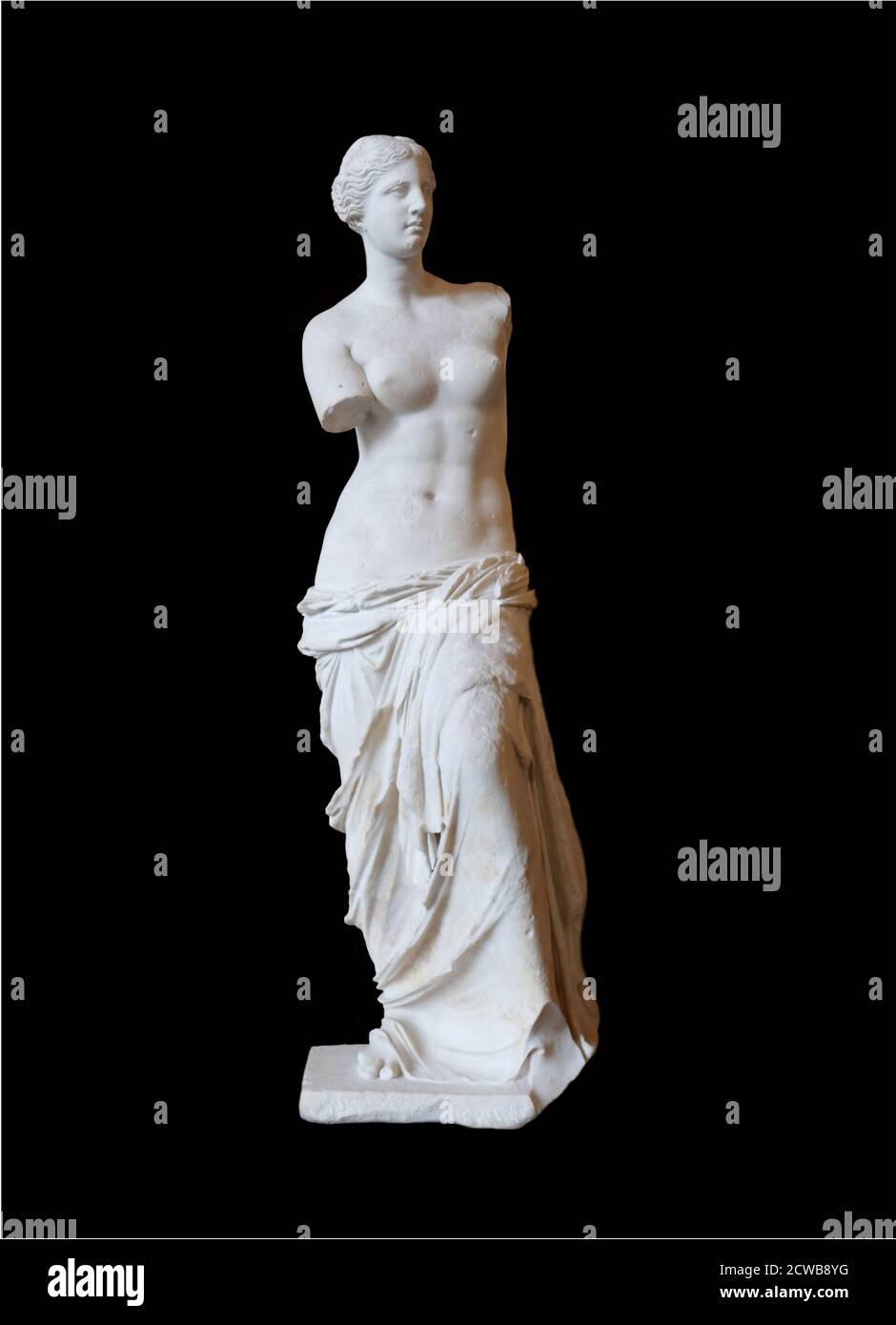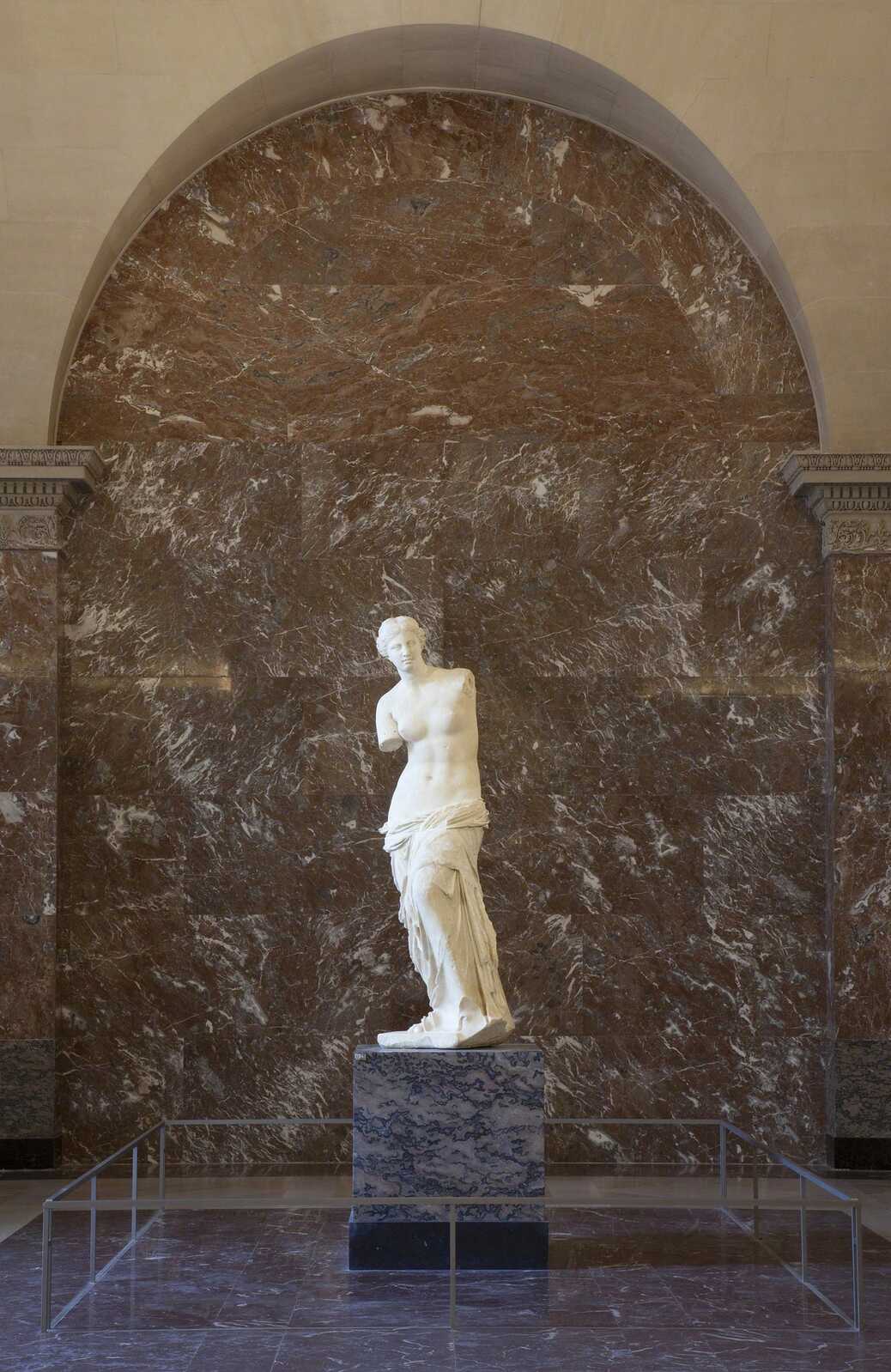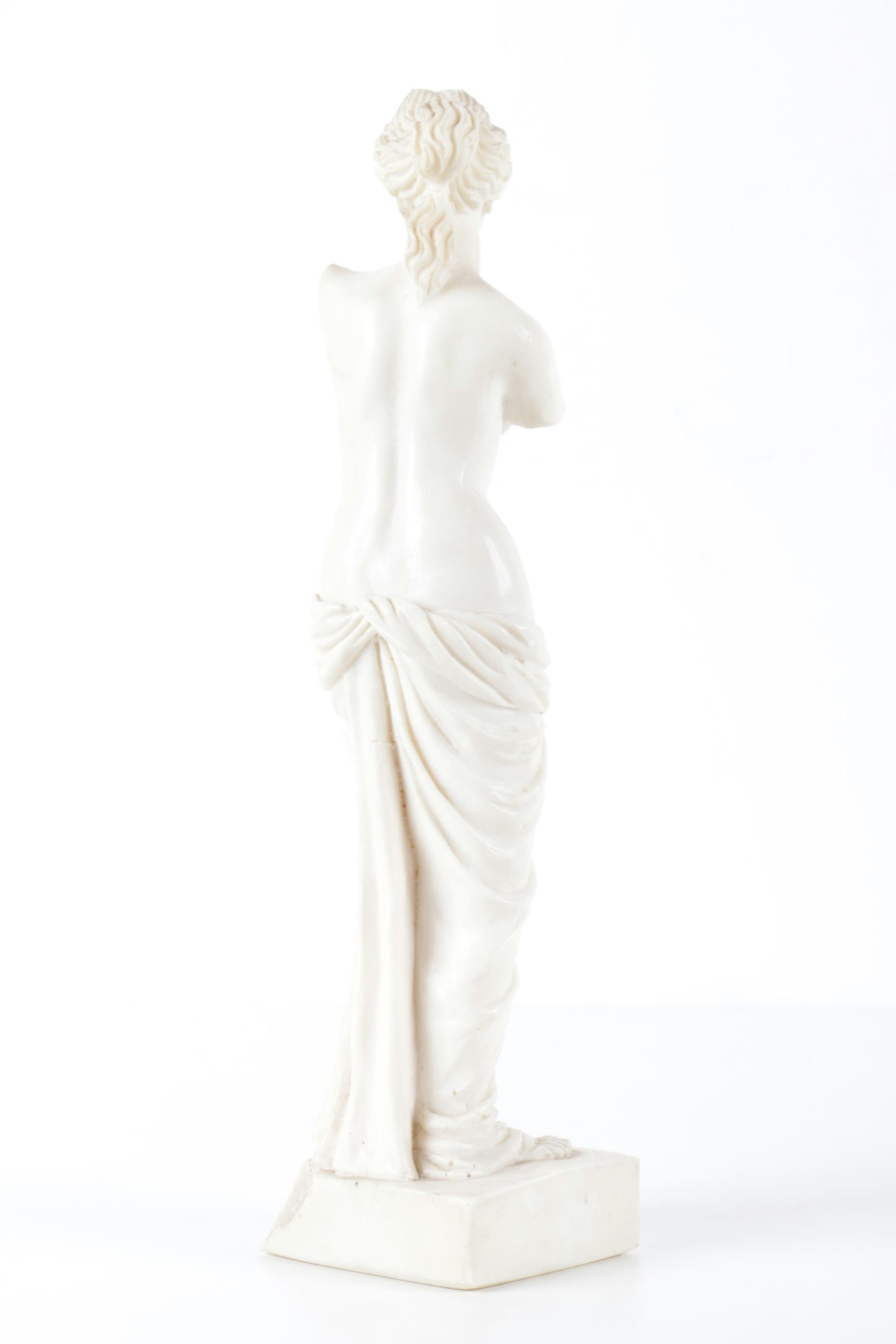
Marble sculpture known as the Venus de Milo by Alexandros of Antioch. Alexandros of Antioch a
Alexandros of Antioch. The Venus from Melos, gesturing toward Cupid, shows the apotheosis of the ideal sculptural style under the stewardship of Hellenistic Greece, as produced by the superb Alexandros, who with a handful of colleagues cruelly leave the ruins of their works, deistic and profane (e.g. Nike of Samothrace, the Apollo Belvedere.

Big Apple Secrets Venus de Milo. Alexandros of Antioch,Dine and Dali.
Details Title: Venus de Milo Creator: Alexandros of Antioch Location Created: Statens Museum for Kunst Type: Sculpture

Alexandros of antioch venus de milo gertysun
Produced in the Hellenistic art period, the Venus de Milo sculpture is believed to have been created by Alexandros of Antioch between the years 150 BC and 125 BC. The famous statue without arms is thought to portray Venus in Rome, or Aphrodite, as she is known in Greece. Others believe it is a representation of Amphitrite, the sea goddess.
__from_melos__greece__ca_150-125_bce1350349385086.jpeg)
Art History 1701 > Beldenadams > Flashcards > Midterm Image List StudyBlue
Base Deception In 1821, the French carved a classical Greek sculpture. In the Venus de Milo, they thought they finally had one. Never mind that it wasn't really classical Gregory Curtis October.

Alexandros of antioch venus de milo mainportable
What was more interesting was the plinth (i.e. the base of statue) also showed the name of the Hellenistic sculptor, Alexandros of Antioch. And the statue's true name was "The Aphrodite of Melos". Knowing this would ruin all that they've worked for, the Louvre cunningly destroyed the plinth and continued to market the false narrative.

alexandros of antioch
An inscription that is not displayed with the statue states that "Alexandros, son of Menides, citizen of Antioch of Maeander made the statue." The figure's origin on the island of Melos has led some to think she may be Amphitrite, the Greek goddess of the sea. The general composition derives from a 4th-century- bce Corinthian statue.

Venus de Milo by Alexandros of Antioch. Art work by Nathan Sawaya all made from LEGO bricks
Originally carved in two blocks of marble then fitted together, the statue stands 6 feet 7 inches from head to toe and is the creation of an artist named Alexandros of Antioch, about whom little.

"Venus de Milo" (detail). Alexandros of Antioch, 130100 BC. Venus art, Venus de milo
From Wikipedia, the free encyclopedia. Alexandros of Antioch ( Greek: Ἀλέξανδρος) (2nd - 1st century BC) was a Greek sculptor of the Hellenistic age. He is thought to be the sculptor of the famous Venus de Milo statue.

Marble sculpture known as the Venus de Milo by Alexandros of Antioch. Alexandros of Antioch a
Alexandros of Antioch Hellenistic sculptor Date of Birth N/A Date of Death N/A More about Alexandros of Antioch Name Alexandros Speciality Sculptor View all Works by Alexandros of Antioch Venus de Milo Maura Wilson Contributor Alexandros of Antioch may or may not have been tall, dark, or handsome, but this man of mystery certainly had talent

Venus de Milo Sculpture by Alexandros of Antioch in 2022 Ancient sculpture, Statue, Ancient
Venus de Milo (Between 150 and 125 BC) attributed to Alexandros of Antioch. 204 cm. Louvre Museum, Paris, France.Image source Jastrow via Wikimedia Commons (Public domain) An Unexpected Discovery. Sometimes known also as Aphrodite of Milos, the Venus de Milo was carved in marble sometime between 150 and 125 BC. The circumstance of the sculpture's original creation is a mystery, but it is.

Attributed to Alexandros of Antioch Aphrodite of Melos, called Venus de Milo (130120 BCE) Artsy
On the basis of a now-lost inscription found near the sculpture, it has been attributed to Alexandros from Antioch on the Maeander, though the name on the inscription is uncertain and its connection to the Venus is disputed. The original pose of the sculpture is unknown.

Megas Alexandros Greek History, Roman History, Ancient History, Ancient Greek Art, Ancient Rome
Alexandros of Antioch ( Greek: Ἀλέξανδρος) (2nd - 1st century BC) was a Greek sculptor of the Hellenistic age. He is thought to be the sculptor of the famous Venus de Milo statue. Life Alexandros appears to have been a wandering artist who worked on commission.

Venus de Milo on display at the Louvre. Artist, Alexandros of Antioch Venus de milo, Antioch
Alexandros of Antioch was a sculptor of the Hellenistic period. He is widely believed to have created one of the most famous classical sculptures, the Venus de Milo statue. Alexandros was known to work as a wandering artist on commission, although little else is known about his life.

PPT Gardner’s Art Through the Ages, 13e PowerPoint Presentation, free download ID5323811
Greece Associated Locale Antioch on the Maeander (Extinct city) Field of Activity Statues Marble sculpture Occupation Sculptors Exact Matching Concepts from Other Schemes http://viaf.org/viaf/sourceID/LC%7Cno2018034360#skos:Concept Closely Matching Concepts from Other Schemes Alexandros of Antioch Label from public data source Wikidata Sources

Resin Reproduction Sculpture after Alexandros of Antioch's Venus de Milo EBTH
Alexandros of Antioch (2nd - 1st century BC) was a Greek sculptor of the Hellenistic period. His style is characterized by its naturalism, as exemplified in the famous Venus de Milo. He is believed to have been a pupil of the renowned sculptor Praxiteles. Alexandros was born in the city of Antioch in Asia Minor (modern Turkey).

Alexandros of Antioch
Alexandros of Antioch is credited with the statue's creation. Drawing of 'Venus de Milo' on its lost plinth. / Wikimedia Commons // Public Domain A sculptor of the Hellenistic period,.